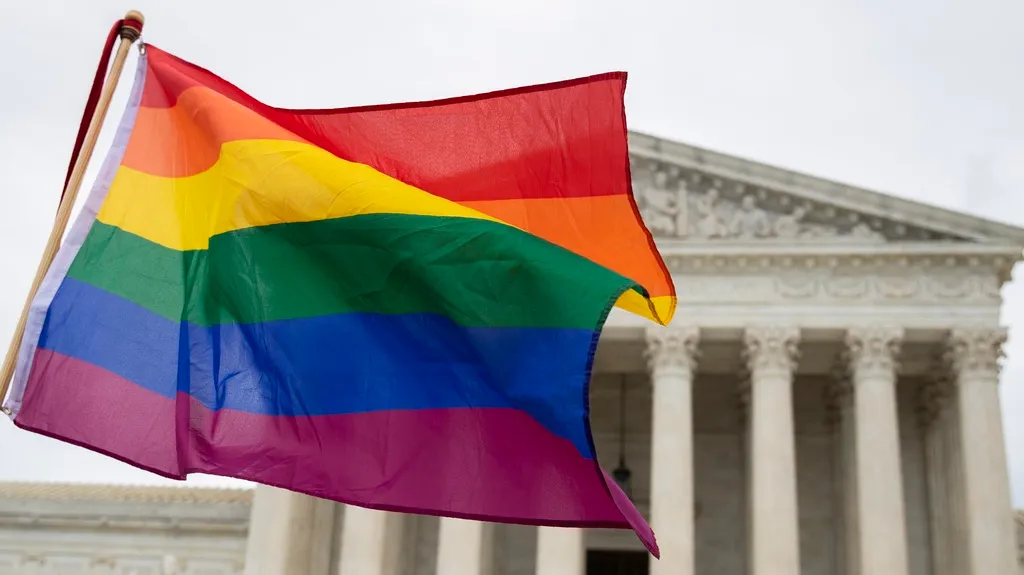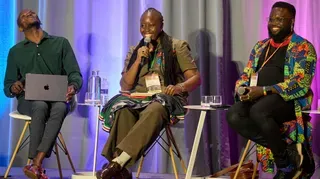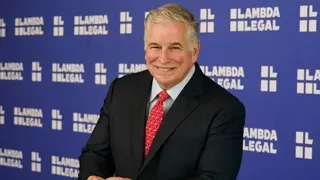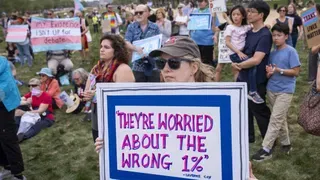August 19, 2011
African-American Churches Craft New Outreach Strategies
Scott Stiffler READ TIME: 5 MIN.
For former elected and longtime activist C. Virginia Fields, 6:30 a.m. on a rainy and miserable Sunday morning was likely not her first pick for a prime time to be discussing HIV.
But there she was, on NYC's local CBS news program -- engaging the anchor with an upbeat plug for her National Black Leadership Commission on AIDS and reminding viewers that the latest Centers for Disease Control statistics regarding disproportionate HIV infection rates among African-American men who have sex with men (MSM) serve as a grim reminder of her community's struggle to deliver the prevention and detection message.
Also mentioned in the conversation was how the Commission gives to churches so they can reach vulnerable populations in ways that health care providers cannot.
It's appropriate then, that while Fields was raising awareness on the airwaves, Pastor Vanessa Brown and her parishioners were likely waking up and making preparations for that day's worship service.
Currently located in the Bronx, Pastor Brown's Rivers of Living Faith church began its HIV/AIDS outreach program four years ago while based in Harlem. Since then, the largely LGBTQ congregation has partnered with local hospitals and various NY state programs. Initial efforts occurred during Sunday services, when representatives from Iris House (a Center for women living with AIDS) and The Ryan Center (a community health network) would bring mobile units to the church's 151st Street location, while Rev. Brown let parishioners know that HIV testing would be available outside.
Prior to the service, Rev. Brown recalls, "We'd get the word out through Facebook, using language we thought could draw MSM. Some of our young adult men who are gay, and proud to be gay, were very effective in bringing people to the church. We wanted people to know we were a ministry that cared, not just an incentive-involved one. Initially, we partnered with others who were funded. I needed to let people know that this is attached to our heart, not a dollar amount -- that we were not just another black church who would try to vilify them once they got there, because they were gay."
Although many parishioners expressed gratitude for the topic being raised within the context of a religious service (a rare occurrence), some willing to learn their status were reluctant to be seen entering the testing van.
Churchgoers who remain in the closet -- and the fear among heterosexuals of being perceived as gay simply by engaging in the HIV discussion, remain significant obstacles.
To compensate, Brown also made testing available inside, and, "Once I dismissed the service, I stayed to talk to them. I explained the process. For those who had positive results, we had ministers in place that were there to support them after the news."
HIV Testing Proves a Challenge
Oliver Martin, chair of the Riverside Church HIV/AIDS group, notes that although, "Churches are viewed as an equipping place for education; a way to provide services to the community they serve," the HIV message (with its inherent necessity to acknowledge sex and sexuality) has proven a challenge to deliver directly from the pulpit.
More successful, he says, is the stealthy inclusion of HIV testing alongside wellness topics such as, "diabetes, blood pressure, mammograms, pap smears; all of those different things that you can routinely test for within a normal community Health Fair afternoon. I find that many of our African-American churches tend to utilize that vehicle quite effectively-and it's less stigmatizing."
Lynnette Ford, Director of the David Geffen Center of HIV Prevention and Health Education at the Gay Men's Health Crisis (GMHC), says that although churches are generally more welcoming to those who identify as LGBT than they've ever been, "The landscape is not as far as we'd like it to be, but we've come very far from where we started."
Over the past few years, GMHC has established a relationship with Canaan Baptist Church, Burns Memorial Church of God, and Allen A.M.E. But at first, Ford recalls, "It was very difficult to get into churches to do HIV testing. Because when you talk about HIV and other sexual diseases, often you're talking about things that the church ideologically disagrees with: premarital sex and condoms -- and you have to deal with the individual ideology of the pastor or head of the church. So we had to package it in a way that shows why this is good for your congregation; very affirming of the individual church's belief, and very cognizant of the way they wanted us to do things."
Gregory Richane, a member of the Federation of Protestant Welfare Agencies, recalls a July 14 meeting sponsored by the New York City Faith in Action Coalition for Prevention, Care and Education Coalition. He says that the consensus reached by faith leaders at their "United in Battling HIV/AIDS" conference was that the church "must go to where people are," in order to genuinely engage them. That doesn't necessarily mean church pews.
Taking the Message to the Streets
"We heard about a project, where some folks working out of the Second Providence Baptist Church in Harlem were doing outreach at Lincoln Houses...leaving information on door hangers and flyering outside, as a way to encourage folks to come and get tested."
The event involved more than 15 Black Churches in Harlem working in collaboration that day to place 1,200 HIV informational bags on residence doors, provide HIV testing, and host three HIV physicians to answer any medical questions that the residence had.
One of the most useful takeaways from the conference, recalls Richane, was the effectiveness of, "starting out with the overall topic of health, then addressing HIV within that context. This was very useful for some folks who try to connect with congregation members who might be a little scared off by a conversation about HIV, but might be willing to address it in an overall health context."
Martin (who attended the July 14 conference) also notes the effectiveness of church-based HIV ministries which take their message to barber shops, sex clubs, tattoo parlors, and down-low bars -- where, Martin says, the roundabout approach to discussing HIV testing, prevention and infection treatment is particularly effective.
Of the barbershops, a time-honored gathering place where the frank talk often stops short of sexuality identity, Martin observes, "Men don't necessarily talk about their sexuality with each other to begin with. So you have to devise some way to bring up serious conversation."
Ford says the reluctance to engage in frank sexual conversations is as prevalent in the barber/beauty shop chair as it is in the pews.
"Homophobia is very real in the African-American community," she laments, "So when we put condoms in barber shops and pass out literature, we talk about it in a general way, so that we don't ostracize a person who may be sitting in the chair who hasn't come out yet. We talk about sex in all the wonderful ways you can have it, whether vaginally or anally. It's also important to talk about it in that way, because often times when you talk about how gay men or same-sex gender loving men have sex, often times anal sex is the riskiest -- and that can stigmatize the gay men. But heterosexuals have anal sex as well. It's the sex that leads to HIV -- not the orientation of the individual."
Scott Stiffler is a New York City based writer and comedian who has performed stand-up, improv, and sketch comedy. His show, "Sammy's at The Palace. . .at Don't Tell Mama"---a spoof of Liza Minnelli's 2008 NYC performance at The Palace Theatre, recently had a NYC run. He must eat twice his weight in fish every day, or he becomes radioactive.







